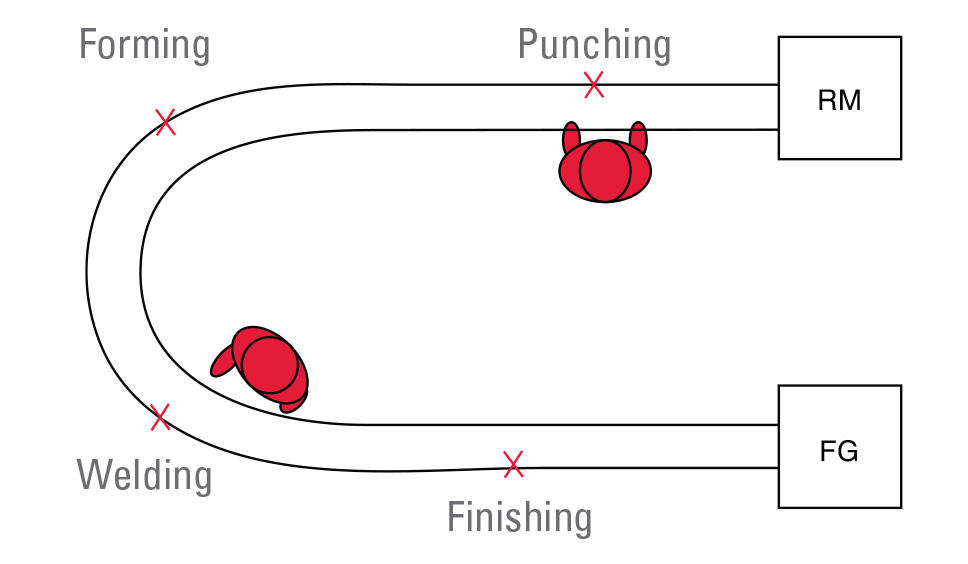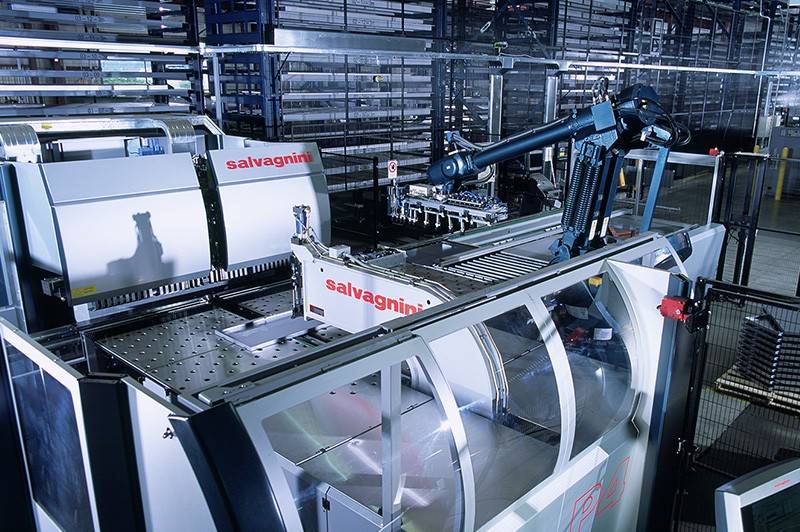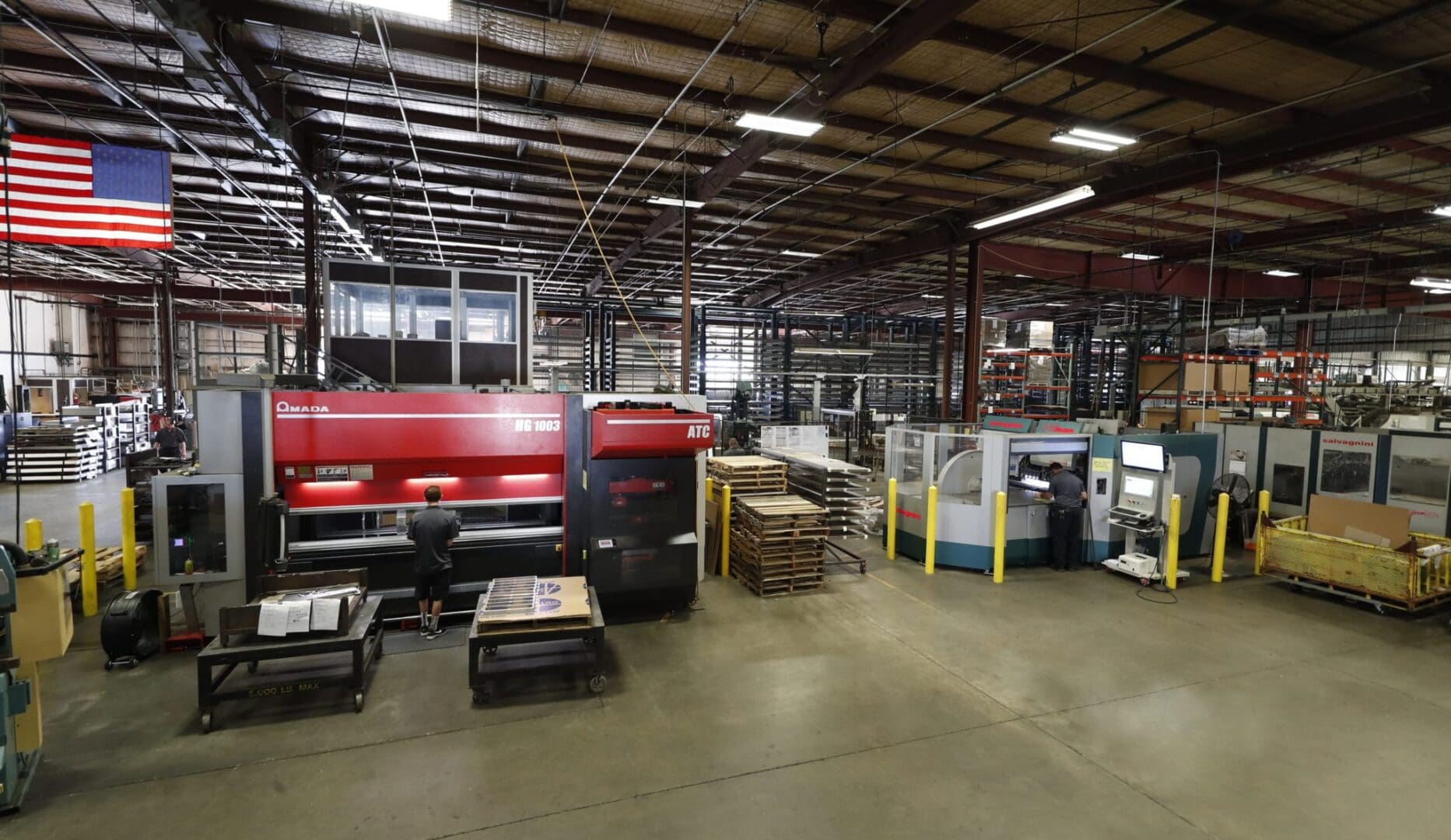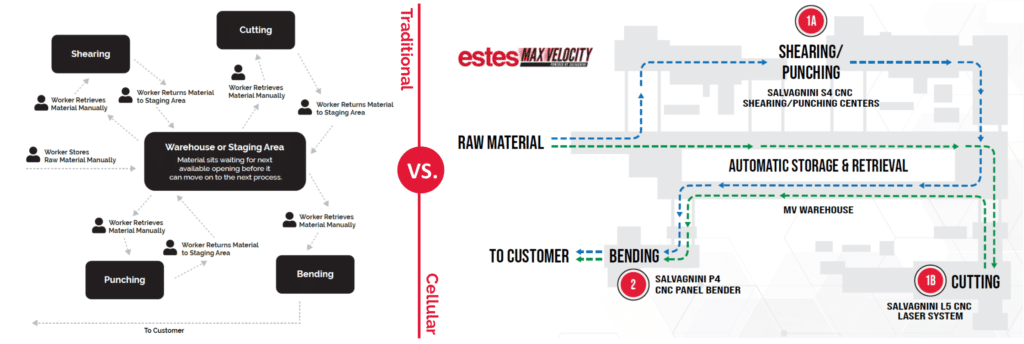No matter the size of your manufacturing environment, how you choose to organize each square foot of your facility can make a significant impact on the success of your organization. Cellular manufacturing has proven to provide many benefits to the companies that adopt this manufacturing style. Below we define cellular manufacturing and how it works, discuss its benefits, and deliver insight on the advantages of cellular manufacturing compared to other systems.
How does it work?
Cellular manufacturing is a manufacturing approach in which various machines used to create a part or complete a process are situated together in the shop in a manner that supports an efficient process flow. This  arrangement is referred to as a cell. Raw materials enter the cell, and finished goods leave the cell. The purpose of cellular manufacturing is to promote a smooth flow of materials and components as well as reduce the amount of time it takes to complete a part or component. A cell can take many different forms. Sometimes the parts are handed off directly from one operator to the next, reducing material handling time and storage needs. In some cases, an operator on an automated machine may do the next operation in process, eliminating the need for a second operator and reducing costs.
arrangement is referred to as a cell. Raw materials enter the cell, and finished goods leave the cell. The purpose of cellular manufacturing is to promote a smooth flow of materials and components as well as reduce the amount of time it takes to complete a part or component. A cell can take many different forms. Sometimes the parts are handed off directly from one operator to the next, reducing material handling time and storage needs. In some cases, an operator on an automated machine may do the next operation in process, eliminating the need for a second operator and reducing costs.
What are the benefits?
The benefits to cellular manufacturing are numerous. One of the biggest is decreasing the cost of the parts. With the machines dedicated to the cell, there is little-to-no setup time needed, and material handling time and material flow distance are also minimized.
Another benefit is the improvement in quality. When parts are run in a self-contained cell, the operators have better communication and nearly instant feedback when they see issues or areas for process improvement. Also, since the parts are either being handed from one operator to the next or have only one operator doing multiple steps, the parts are handled less frequently, reducing the opportunity for damage to occur.
A third benefit to cellular manufacturing is a reduction in lead-time. With dedicated machinery and workers, there is not much down time between operations. Parts move through the cell more quickly than they would otherwise. In addition to this, the benefits of reduced setup time, reduced material handling, and reduced material flow distance discussed above, all culminate to help reduce production lead-times.
Traditional Manufacturing vs. Cellular Manufacturing
Most sheet metal fabricators use a traditional manufacturing style where shop floors are laid out by type of equipment or department, and materials and components are processed in a batch-and-queue manner. As one step in the fabrication process is completed, an employee moves the parts back to the warehouse or staging area where they sit waiting for the next process. If working with large batches, this can create bottlenecks and extend the time required to process, because jobs go to the back of the line in each department. If a quality issue develops, it often isn’t found until a full batch is completed, which can lead to high scrap and wasted time, compromising the on-time delivery of your parts.
However, with cellular manufacturing, the various machines used to create a part or complete a process are situated together in the shop in a manner that supports an efficient process flow and maximizes productivity. Machines are often left set up so they can run the same parts or family of parts. Because of this, cellular manufacturing is the best fit for high volume parts or parts that will be run with high frequency.
How can Estes help?
Estes currently utilizes cellular manufacturing through our Max Velocity cell. Estes’ Max Velocity fabrication cell boosts efficiency beyond that of traditional cellular manufacturing. Every machine in the cell is fully automated, including the automatic storage and retrieval system (MV Warehouse), so inefficient handoffs between machines are greatly minimized, which helps with product throughput and quality. The automated nature and advanced technology of the cell lends itself to providing exceptional quality, shorter lead-times, and improved on-time delivery, and ensures customers receive the most cost-effective solutions to the challenges of manufacturing. With our Salvagnini equipment, we are able to punch/shear parts on our S4, and then load the part blanks back in to our MV Material handling system, which will then move the parts through the system to our automated P4 panel bender, all without a human operator touching the parts.
Estes Accelerator is our rapid prototyping and product development cell, with its own dedicated equipment. The Estes Accelerator team works to quickly make low-volume parts, using their dedicated machinery and personnel to design and fabricate parts in just a few days.

Estes also has other cells set up for specific customers, with the ability to set up more. We have numerous press brakes which can be moved around our shop and stationed near other machines so parts can be formed in process at our turrets as they are punched or near the panel benders so we can do any additional forming while the automated forming is happening on the next part, reducing another operator.
Using cellular manufacturing, Estes is equipped to help you make your parts more economically, with improved quality, and reduced lead-times. Contact us today to get started on your next project!









